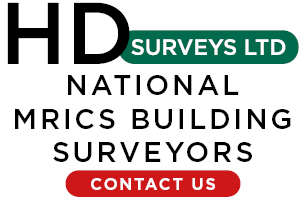
Shelley Schubert, senior marketing communications manager at First4Lawyers
By Shelley Schubert, senior marketing communications manager at First4Lawyers
Marketing in the digital age can sometimes feel like it has a language all of its own, and with new words and phrases cropping up all the time, it can be difficult to keep up.
Understanding the lingo is crucial if you want to keep up with your competitors, however, and could well unlock new tools to help your business perform better.
The good news is that we’ve done the hard work so you don’t have to and put together a handy glossary of some of the most commonly used terms in marketing today. You can also check out our previous jargon-busting guide here.
Backlinks: These are hyperlinks, such as the one above, which take users from one web page to another. A useful tool but also worth its weight in gold when it comes to SEO.
Google rewards relevant, authoritative content and one of its main ways of determining that is by good quality backlinks, which it sees as votes of confidence from other websites.
The bad news is they’re not easy to get, but it is worth putting in the hard yards if you want to rank on the first page of the Search Engine Results Pages (SERPs). One way is to make sure that your own website is in good shape to encourage others to link back to it. Read some top tips on how to do that here.
Bounce rate: The metric for measuring the percentage of visitors to your website who leave after viewing only one page.
You can use GA4 to calculate your bounce rate or do it manually by dividing the number of single-page visits by the total number of visits in a given period of time.
A bounce rate of 40% or lower is considered good but anything higher could indicate a bad user experience, so understanding it and monitoring it is crucial.
Call to action (CTA): This is the specific next step that a marketer wants the user to take, whether that’s contacting the company, subscribing to a newsletter or purchasing a product.
It is typically in the form of a link or button at the bottom of a webpage or email or contact details at the end of an advert.
Core web vitals (CWV): These help developers understand how users experience a web page by measuring its loading speed, interactivity and visual stability. They can be tracked using GA4.
Google measures CWVs every 28 days and uses this data as a ranking factor. It is also important as optimising your website speed is likely to help improve conversion rates.
Cost per click (CPC): The average amount an advertiser spends each time an ad is clicked on by a user. You can calculate this by dividing the total cost of your clicks by the total number of clicks.
The more clicks you get, the lower your CPC. Every business is different but a 5:1 ratio of revenue versus advertising spend is generally considered a good benchmark.
Monitoring CPC alongside other metrics can also help highlight the best times to push activity.
E-E-A-T: This stands for Experience, Expertise, Authoritativeness and Trustworthiness and is something Google introduced to help assess the quality and credibility of online content. It started out as E-A-T before an extra ‘E’ – for ‘Experience’ – was added, reflecting the value that Google now places on an author’s credentials, reputation and direct real-world experience.
Arguably, these four pillars are something you should be aiming for anyway in order to provide a great user experience. Whilst E-E-A-T is not a ranking factor, Google does use data from its evaluations to improve its algorithms, however, so it is worth adhering to the guidance.
Evergreen content: This is content that is not time-sensitive and likely to remain fresh and relevant to users over a long period. Well-crafted evergreen content is valuable as it has the potential to drive traffic to your website for many months, sometimes years.
Most good content marketing strategies contain a mix of evergreen and more topical material.
Featured snippet: The ‘snippet’ you see at the top of the SERPS every time you do a Google search. The search engine automatically pulls this content from web pages in order to try and answer the user’s query as quickly as possible.
There’s no silver bullet for becoming a featured snippet. However, creating clear and informative 40–50-word explainers, relevant to the kind of keywords you want to be ranked for, will improve your chances.
Keyword cannibalisation: When multiple pages on a website concentrate on the same keyword or keywords, this affects how highly each is ranked because the search engine doesn’t know which one to choose.
You can prevent this through regular content audits and by tracking the performance of the keywords that you want to be ranked for.
Reels or shorts: Short-form video content for when you want to grab someone’s attention quickly. Most of the best performing are just a few seconds long.
Reels are an Instagram feature launched in 2020 to compete with TikTok; shorts are a similar format found on YouTube.
Carousels, also popular on Instagram, house multiple photos and/or videos and are particular useful if the content requires a more detailed explanation.
White hat SEO: Working within Google’s guidelines, creating quality content and a good user experience, as opposed to black hat SEO. The latter is at best unethical – spamming competitors with malicious links, for example – and at worst illegal such as hacking and stealing intellectual property.
Black hat SEO focuses on manipulating Google’s guidelines to gain higher rankings. However, it is a risky strategy as those who are found out can face heavy penalties and may even be blacklisted by the search engine altogether.
I hope this is useful for anyone struggling to keep on top of the terminology. If there’s anything I’ve missed, please email me at marketing@first4lawyers.com and I will include it next time.
This article first appeared on Insurance Claims.








